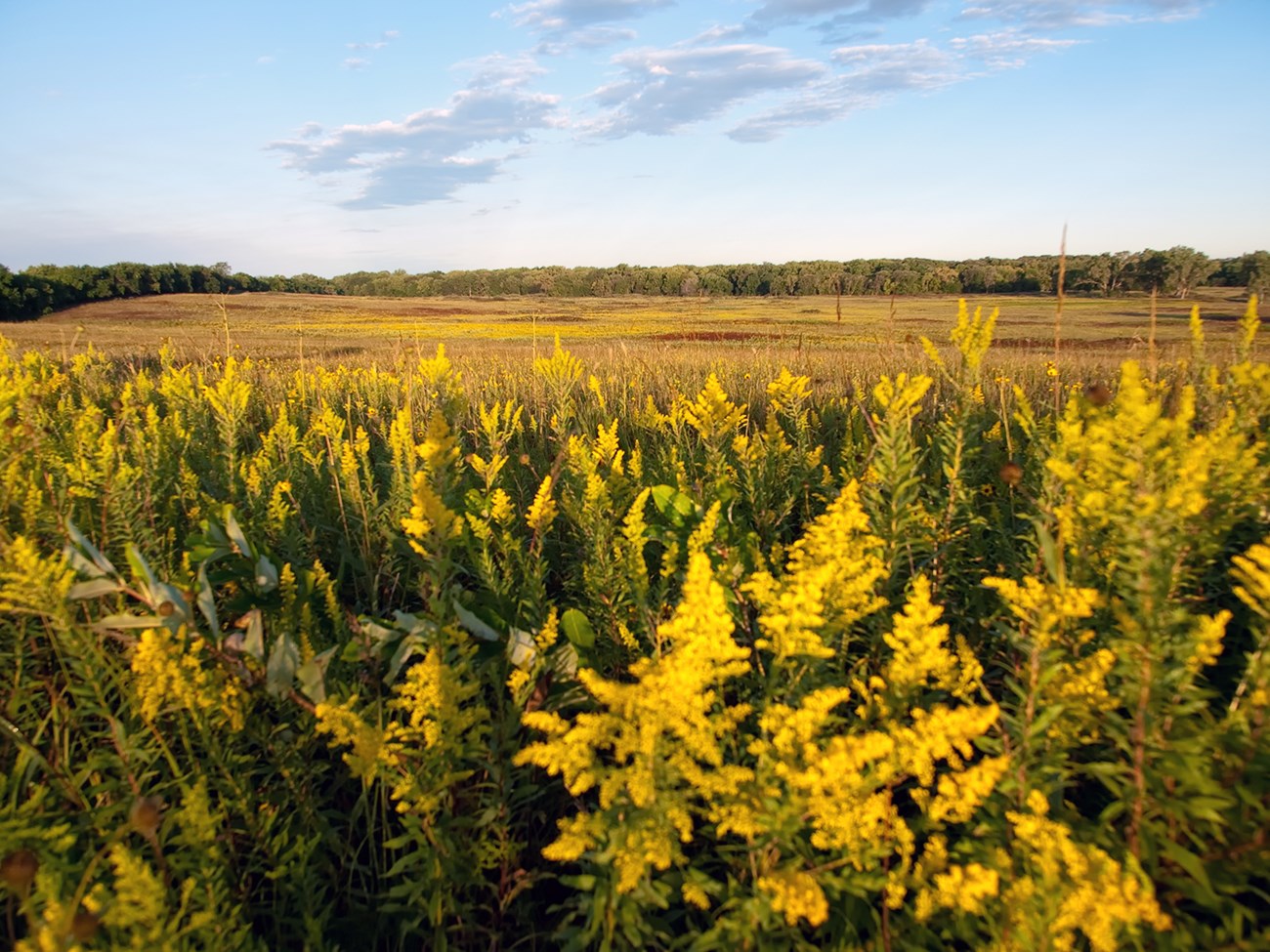Last updated: June 11, 2024
Article
Bird Community Monitoring at Homestead National Historical Park in Nebraska, 2022

NPS
Why Do We Monitor Birds?
Birds are an important part of the world we live in. They eat pests, disperse seeds, pollinate plants, and feed us, and birdwatching is a multi-billion-dollar industry. Park interpretive programs often feature birds because of the enjoyment they provide. Birds are also great indicators of environmental change. They serve as the canary in the coal mine for an ecosystem—an early warning system for environmental change.
Habitat at Homestead National Historical Park supports a variety of bird species, including birds of regional concern. About 15% of the species that breed or may breed in the park are in decline, and some of these species are declining at alarming rates, including Tree Swallow, Great-tailed Grackle, Loggerhead Shrike, and Grasshopper Sparrow. Scientists in the Heartland Inventory and Monitoring Network measure changes in birds and their habitat to determine the health of bird communities and park ecosystems. During the breeding season, we survey for birds at the park and gather information about the structure and composition of the park plant communities that birds live in. We compare park bird trends with bird trends in the region. Together, this information helps us determine how healthy the park bird community is and how birds respond to changes in their habitat. Knowing how birds are doing can help the park take effective steps to restore and maintain bird habitat.
Park Bird Community (2009–2022)
We started surveying for birds at the Homestead National Historical Park in 2009. In 14 years of surveys, we have found 98 bird species at the park. Eighty-one of these species have the potential to breed in the park. The number of bird species found during surveys and how they were distributed across the landscape was relatively unchanged over the years. The two breeding species of concern, Bell’s Vireo and Red-headed Woodpecker, in the larger region should be considered when managing habitat on the park.
NPS
Bird Habitat
Homestead National Historical Park is in the northeast section of the Central Mixed Grass Prairie Bird Conservation Region. This region extends from the edge of shortgrass prairie on its west side to the edges of the tallgrass prairie and savanna-like habitat on its east side. Large areas in the center of the region have been converted to agriculture, but some extensive areas of high-quality grassland remain. Homestead National Historical Park is primarily made up of woodland and restored prairie habitat. About 130 species of breeding birds can be found in the mixed grass prairie habitat in and around Homestead National Historical Park.
Trends of Common Bird Species
Eighteen bird species were observed on the park in sufficient numbers to calculate annual abundances and population trends. The Dickcissel, Red-winged Blackbird, House Wren, and Common Yellowthroat were the most abundant and widespread species on the park. Red-winged Blackbird moderately increased on the park, but we could not detect trends in the park populations of the other 17 common bird species. Regionally, two of the common park species (Gray Catbird and Yellow Warbler) were increasing, and six of the common park species (Brown-headed Cowbird, Common Yellowthroat, Mourning Dove, Northern Bobwhite, Ring-necked Pheasant, and Red-winged Blackbird) were declining. Regional trends were uncertain for the other 11 bird species that were common on the park.

NPS
Species Highlight: Red-headed Woodpecker
Red-headed Woodpecker is a year-round resident at Homestead National Historical Park and a species of concern in the Central Mixed Grass Prairie Bird Conservation Region. They have been declining across their range because of habitat loss and changes in the availability of their food. The Red-headed Woodpecker is one of four woodpeckers in North America to store food, and it’s the only one that covers the insects, nuts, and seeds it hides in trees with wood or bark. They aggressively defend their territory and have even been known to destroy nests or remove eggs from the nests of other bird species. Red-headed Woodpeckers rely on mature trees and snags in woodlands and orchards for nesting and food storage. To protect this species, it is important to preserve the woodland habitat it relies on in the region and at Homestead National Historical Park.
For More Information
Read the full report.Visit the Heartland Inventory and Monitoring Network website.
